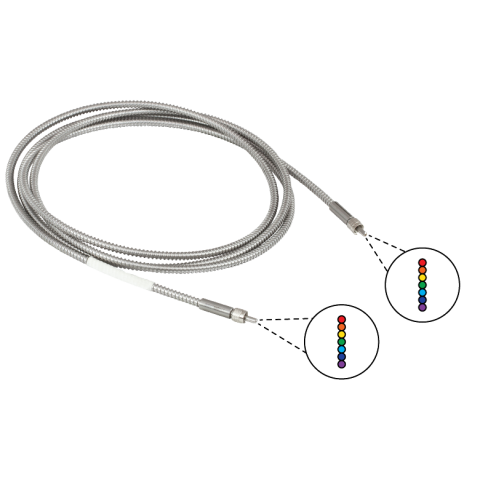Linear-to-Linear Fiber Optic Bundles
These fiber bundles contain 7 fibers arranged in a line configuration (linear) at both ends. Linear-to-linear fiber bundle cables are ideal for increasing the coupling efficiency into spectrometers and other optical devices that have an entrance slit. The linear ends match the shape of the entrance slit better than a single fiber or round bundle configuration and therefore increase the amount of light entering the device. The linear ends are also better suited to the elliptical emissions of typical discharge style lamps and measurements using cuvettes, such as absorption spectroscopy.
-
Features
- Linear-to-Linear Fiber Bundles with 7 Fibers
- Low- or High-OH, Ø105 µm or Ø200 µm Core Multimode Fiber
- 2m Long Cables with SMA905 Connectors
- Coherently Mapped Configuration
- Linear Ends Match the Entrance Slit of a Spectrometer for Higher Signal Levels
- Linear Ends can Generate a Line Illumination Pattern
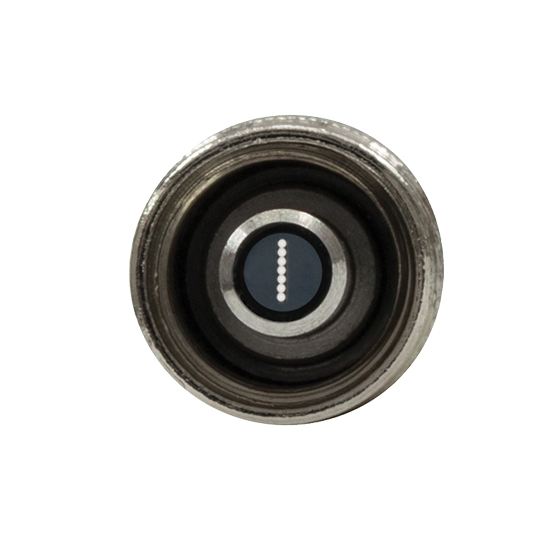
Linear Bundle End

Behind the 20 µm x 2 mm Entrance Slit of a 350-700nm Compact Spectrometer
-
Specification
|
Item # |
BFA105HS02 |
BFA105LS02 |
BFA200HS02 |
BFA200LS02 |
|
Number of Fibers |
7 |
|||
|
Fiber Core Size |
Ø105 µm |
Ø200 µm |
||
|
Linear End Fiber |
0.90 mm x 0.13 mm |
1.55 mm x 0.23 mm |
||
|
Round End Effective |
355 µm |
640 µm |
||
|
Fiber NA |
0.22a |
|||
|
Hydroxyl Ion Content |
High OH |
Low OH |
High OH |
Low OH |
|
Wavelength Range |
250 - 1200 nm |
400 - 2400 nm |
250 - 1200 nm |
400 - 2400 nm |
| Fiber Attenuation Plot |
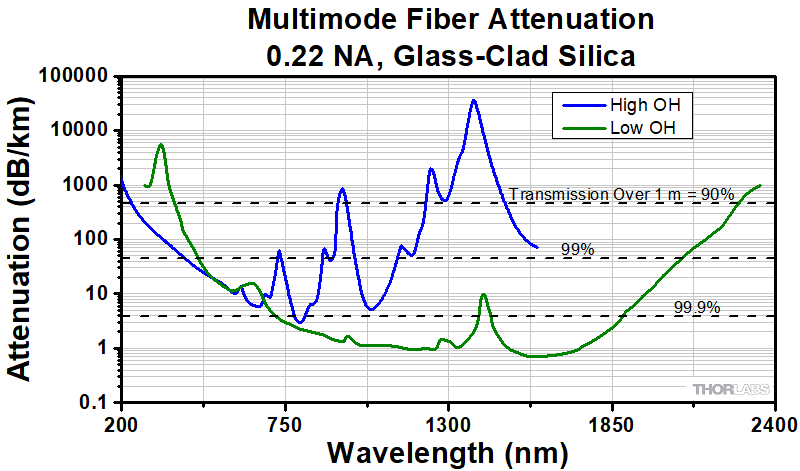 |
|||
|
Length |
2 +0.075/-0 m |
|||
|
Connectors |
SMA905 |
|||
- The NA of the bundle is the same as that of the individual fibers.
- Notice
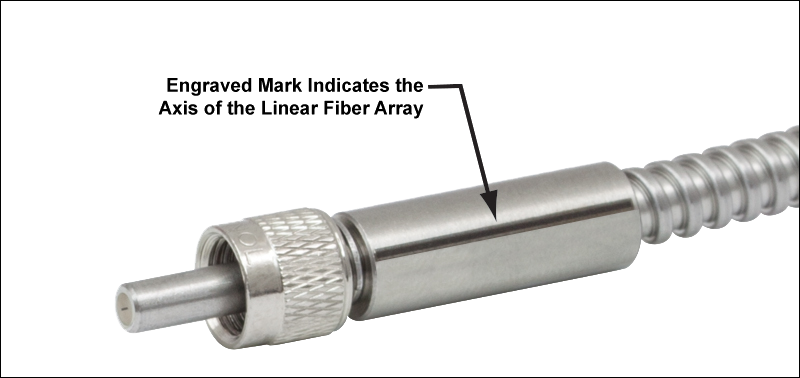
An Engraved Mark on the Connector's Strain Relief Sleeve Indicates the Axis of the Linear Fiber Array
Each patch cable includes two rubber and two metal protective caps that shield the connector ends from dust and other hazards. Additional CAPM Rubber Fiber Caps and CAPSM Metal-Threaded Fiber Caps for SMA-terminated ends are also offered separately.
※ Note: The fibers in these bundles are coherently mapped, occurring in the same order on both ends of the bundle.
-
Application Ideas
- Coherence of Linear-to-Linear Bundles
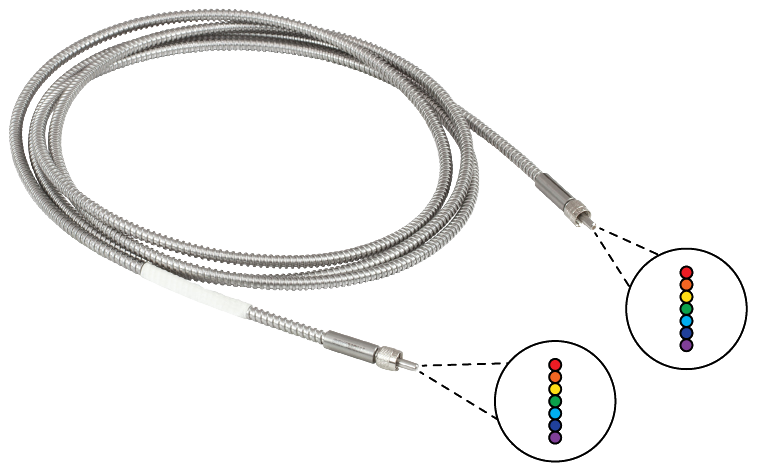
- Benefits of Linear-to-Linear Bundles
The shape of the linear ends of these bundles matches the entrance slit of a spectrometer better than the end of a single fiber or a round bundle. Similar to the narrow entrance slit of a spectrometer, the shape of cuvettes used for absorption spectrometry is better suited to the linear ends of these bundles than to the ends of single fibers or round bundles, further increasing the efficiency of absorption spectrometry measurements. In addition to the cuvette and the entrance slits of the spectrometer, typical discharge style lamps have highly elliptical emission volumes that also couple more efficiently to linear bundle ends.
- Absorption Spectroscopy
Spectrometers measure the properties of incident light over a specific range of the electromagnetic spectrum. When light passes through a sample containing cells or particles before reaching the spectrometer, the amount of light reaching the spectrometer will be decreased due to the absorption or scattering of light by the contents of the sample. The measurement of the percentage of light that is transmitted through the sample is called absorption spectroscopy and can be used to measure the progress of an enzymatic reaction, the concentration of a sample, or the absorption spectrum of a sample.

